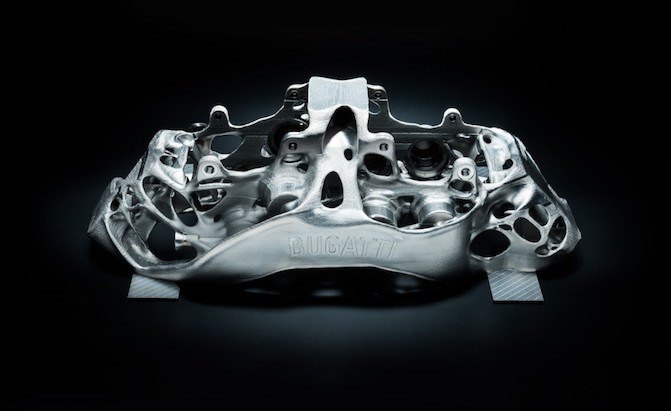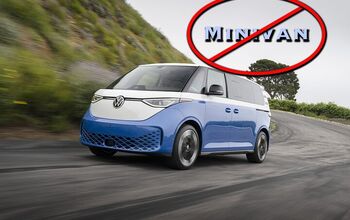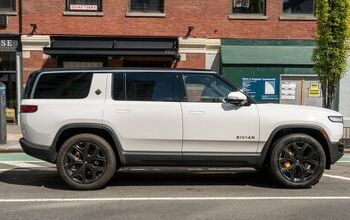Bugatti Produces the First 3D Printed, Fully Functional Brake Caliper

Bugatti has used a 3D printer to produce a brake caliper, creating the largest, fully functional 3D printed titanium object in the world.
The brake caliper is modelled after the production caliper used on the Chiron, which is also the largest caliper offered on a series model. The Chiron’s standard brakes are milled from a single block of high-strength aluminium alloy and feature 8-pistons out front and 6-pistons in the rear.
The new titanium caliper is made from aerospace-inspired metal that is typically used in the construction of aircraft undercarriages and wing components, and also rocket engines. The material is much stronger than the aluminum alloy currently used to manufacture the Chiron’s caliper, but is good for a 4.4 lb weight reduction per unit.
SEE ALSO: This Year, Bugatti Delivered 70 Chirons to New Owners Around the World
Bugatti hopes to trial 3D printed components for production sometime this year. In the case of the caliper, the automaker could reduce unsprung mass for the Chiron or any Chiron model variants that are in the pipeline – extremely important when it comes to performance cars. It was previously not possible to 3D print aluminum or titanium components due to the strength of the materials, but thanks to a new high-performance 3D printer at German company Laser Zentrum Nord Hamburg’s HQ, Bugatti has another advancement to apply to its future road cars.
“It was a very moving moment for the team when we held our first titanium brake caliper from the 3-D printer in our hands,” said head of R&D at Bugatti, Frank Götzke. “In terms of volume, this is the largest functional component produced from titanium by additive manufacturing methods. Everyone who looks at the part is surprised at how light it is – despite its large size. Technically, this is an extremely impressive brake caliper, and it also looks great.”
There’s still some advancements to be made if other manufacturers want to use additive manufacturing on series production cars. It took Bugatti about 45 hours to print the titanium brake caliper pictured here, with lasers slowly depositing titanium powder layer by layer until it was finished. The caliper then undergoes a stabilizing heat treatment to strengthen it. While this time-intensive process may work for the low-volume Chiron, or other Bugatti vehicles, it would be difficult to implement on something even slightly higher volume.
In 3-D printing development, Bugatti is the leader in the Volkswagen group,” Götzke explained. “Everyone can and should benefit from our projects. This is also part of Bugatti’s role as the Group laboratory for high-tech applications.”

Sam McEachern holds a diploma in journalism from St. Clair College in Windsor, Ontario, and has been covering the automotive industry for over 5 years. He conducts reviews and writes AutoGuide's news content. He's a die-hard motorsports fan with a passion for performance cars of all sorts.
More by Sam McEachern

































Comments
Join the conversation